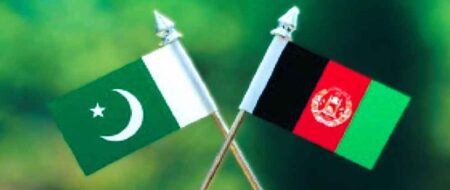Pakistan and the 4th Industrial Revolution: A Preliminary View
Pakistan and the 4th Industrial Revolution:
A Preliminary View
The world has witnessed unprecedented progress in the past two-and-a-half centuries, mainly attributed to industrialization. The 1st Industrial Revolution that began in mid-eighteenth century speeded up over time, turning into the 2nd and 3rd revolutions by late twentieth century and recently entering the 4th phase of Industrial Revolution. It is contended that ‘this phase is not merely a prolongation of the 3rd Industrial Revolution but rather the arrival of a new and distinct one’ (Klaus Schwab).
As in the earlier revolutions, the impact of the fourth is spreading globally. It is intense in advanced economies and is steadily penetrating the developing world. In this context this blog reviews the technological advancement in Pakistan and identifies the likely challenges and opportunities of the 4th Revolution.
Background
For centuries the world economy remained predominantly agrarian supplemented by household industries and handicrafts, with bullock and horse carts as the main source of transport. This landscape began to transform with the invention of steam engine (1760), setting in the 1st Industrial Revolution. The coal-based steam engines served as catalyst in large-scale industrial production, mainly textile and steel, and railways and steam ships that facilitated movement of goods and people.
This first phase is reckoned to last for about one-and-a-half century (1760-1900) and followed by the 2nd Industrial Revolution (1900-1960) in which oil and electricity became the main source of power for mass production and transportation. The invention of internal combustion engine spurred the growth of new industries like metallurgy, automobiles and machine building.
This phase was followed by the 3rd Industrial Revolution spreading over the next forty years (1960-2000). Nuclear energy and natural gas were added to the other sources of power, and computer and robots as new achievements supplemented by growth of chemicals, electronics, automobile and aircraft industries. The periods of these revolutions are indicative; they overlap and have interim periods.
In short, the 1st Industrial Revolution used water and steam power to mechanize production; the 2nd used electric power and oil to create mass production; and the 3rd used electronics and information technology to automate production. These developments have completely changed the economic and social fabric in scale and quality – mass production, wealth creation, employment structure, movement of goods and people, consumption pattern, lifestyle, etc.
4th Industrial Revolution
The three revolutions are now succeeded by the fourth which is considered not merely as an extension of the earlier revolutions but rather a distinct one in respect of velocity, scope and systems impact. As observed by Klaus Schwab:
- The speed of current breakthroughs is unprecedented;
- It is evolving at an exponential rather than linear pace;
- It is disrupting almost every industry in every country; and
- The breadth and depth of these changes herald the transformation of entire systems of production, management, and governance.
Its other main distinguishing features are:
- Fusion of technologies between physical, digital and biological spheres;
- Expansion of connectivity of billions of peoples with mobile devices, with unprecedented processing power, storage capacity and access to knowledge;
- Emerging technical breakthroughs in fields such as artificial intelligence, robotics, internet of things, autonomous vehicles, 3-D printing, nanotechnology, biotechnology, material sciences, energy storage, and quantum computing.
The 4th Industrial Revolution, however, is posing added challenges. The speed, coverage, fusion and disruption embodied in it warrant substantial adjustment and changes in the way people live, work and interact with each other, thus causing economic, social and ethical tensions and conflicts. It is causing inequality and income disparity, and also disrupting labor markets. The shift from manual work to automation and computerization is not only putting unskilled workers out of jobs but also widening the gap between incomes of unskilled and skilled labor. This disparity is airing social tensions.
Explosion and wide access to social media (Facebook, Twitter, etc.) besides improving connectivity, is also providing a platform for propagation of radical and conflicting ideas and ideologies. Cybersecurity, digital crimes and erosion of ethical values are among other challenges. These require effective regulatory framework at national level and strengthened global cooperation.
Pakistan and Industrial Revolutions
A notable feature of industrial revolutions is that though they began in the West, their products and services penetrated rest of the world, including the Indian Sub-continent, rapidly. For instance, the first steam-engine train rolled in England in 1830, the Karachi to Kotri railway line was completed in 1853 as an initial project, and by the end of the nineteenth century the railway network spread throughout India.
Other inventions including telegraph, telephone, radio, electricity, television and computers also followed a similar path. With each revolution the time span shrunk and a stage was reached where innovated products and services were simultaneously available world-wide. The upgradation and improvement of the products/services like mobile and internet is so rapid that one is reminded of the Parisian woman who was rushing out of a department store to wear a newly purchased dress lest it goes out of fashion.
Pakistan is passing through a similar phase. The invented products/services are entering the Pakistani market rather quickly. For instance, the first government-owned television station was set up in mid-’60s and four more were added within five to six years. With opening of the sector to private enterprise in late ’90s and digital and communication advancement, the number of TV channels has multiplied manifold.
The first two computer mainframes were installed in late ’60s mainly to process data. Thousands of laptops and minicomputers are now in use, each having manifold manipulation capacity than the first mainframes.
The telecommunications sector was corporatized in early ’90s and with its opening to foreign investment and technological advancement the service reached all parts of the country. For example, in 2022, mobile subscription reached 88% and broadband 54% of the population. The availability and use of tele-devices are persistently expanding. The multifunctional use of mobile is deeply influencing the way people work, live and interact. Its wide access and multi-functional application has made it an essential part of all active persons – even children and senior citizens are becoming addict to it. The 3rd and 4th generations of internet system will soon be upgraded to 5th, and in the near future to 6th, to facilitate flow of data, information and knowledge.
The software development, services and export have great potential for which Pakistan Software Houses Association (P@SHA) is providing a platform. Over 350 software houses are its member; they are active in domestic software production and services in practically all economic and social fields (e.g. banking, marketing, health education, etc.). Exports of software and other services are also rising rapidly. The contribution of this sector to GDP is currently estimated at 4.8%.
These positive elements are accompanied by handicaps and challenges, including the following:
- These developments are mainly due to the promotional and marketing efforts of foreign firms. Domestic contribution is confined to sale, service and minor repairs; production of hardware is yet to start.
- The rapid industrialization of late ’50s and ’60s was not sustained subsequently; the technological gap also widened. Industries remained confined to primary processing and consumer goods, like food processing, packaging, spinning and weaving, sugar and cement. Basic industries like steel, electrical and heavy engineering, metallurgy, chemicals and petrochemicals remained neglected.
- The economy continues to be agrarian, dominated by old-age cultivation practices, low productivity and lack of technical inputs.
- In this state of agriculture and industry, the services (mainly wholesale and retail trade and transport) are emerging as the major sector with more than 60% share in GDP. The share of skill and technology based services, though currently negligible, is gradually expanding.
- The main limiting factor is weak human capital followed by inadequate physical infrastructure. The adult literacy rate is around 60% and most of these literates can hardly read and write. School enrollment and learning standards are low and quality of teaching, in particular of mathematics, science and technical subjects, poor. So is the position of health and other social sectors.
Despite these handicaps and resistance to change, it is difficult to escape from technological onslaught. The choice is between passive acceptance and active participation; the later should be preferred and a pro-active multidimensional approach be designed in consultation with all stakeholders (government, education and research institutions, business, and users). This should include the following:
Awareness and motivation
In Pakistan not many people are consciously aware of the technological transformation that is currently taking place. The realization is catching up slowly in particular in higher education and research institutions. They are upgrading their syllabus and research programs and introducing futuristic fields, like robotics and artificial intelligence. A few Pakistani IT firms are also collaborating with leading foreign companies on projects in artificial intelligence and internet of things. However, more needs to be done. A comprehensive campaign should be launched to create mass awareness about the impending technological change and motivate people to adopt a positive attitude about it.
Identifying and availing opportunities
Technological advancement is taking place in all fields and its fusion and inter-play is resulting in new and innovative products, processes and uses. Experts have identified some high promise areas (like, artificial intelligence, robotics, internet of things and 3-D printing) which are mentioned in earlier section. It would be desirable to explore all these areas from Pakistan’s perspective in association with all stakeholders (education and research institutions, business, civil society, and government). This exercise should be undertaken periodically for which an institutional mechanism should be set up.
Education, training and skill development
This is one of the most critical areas and needs actions on many fronts in parallel with a comprehensive human capital development program. The life-cycle approach may be adopted. The first two years (pre-school period) should be devoted to a child’s development in health, nutrition, hygiene and basic learning skills. Mathematics and science be made preferable subjects at school level with ICT (Information and Communication Technology) introduced in final years. By post-secondary stage the student should have acquired enough knowledge and learning that enables him either to enter a profession or pursue higher studies. Quality of teaching and relevancy of syllabus, and congenial learning environment should be ensured at all levels of education. A system of periodic review and updating needs to be introduced in line with global technological advancement.
Suitable second-chance interventions tailored to individual needs should also be devised for the existing labor force that has missed out on earlier opportunities or been rendered jobless due technological changes.
Educational facilities for computer science and other technical subjects are increasing steadily. There are 186 public and private universities with 1.6 million enrolled students (about 44% female). The annual turnout of graduates in computer science is estimated at 25,000; except a few universities, the quality output is indifferent. The Higher Education Commission has launched a five-year Human Development Program with World Bank assistance ($400 million) focused on improving teaching, research and governance of universities.
Strengthening legal and regulatory framework and building digital infrastructure
The ensuing technological advancement may necessitate revision or new legislations and rules in certain areas and strengthening their regulatory set-up. The government has announced the Science, Technology and Innovation Policy in 2022 which provide a platform for future action. This should also include identification of areas needing change (for promoting advancement as well as mitigating harmful effects).
International cooperation (including foreign investment and technical collaboration)
Global framework exists for the promotion of cooperation in various technological fields. The World Economic Forum has established the Centre for Fourth Industrial Revolution as an international focal point for multi-stakeholders dialogue and cooperation on governance, challenges and opportunities presented by advanced technologies. The General Agreement on Trade in Services (GATS) of WTO provides a mechanism for facilitating global technological flows. The World Bank has taken initiatives like the South Asia Development Forum which has recently published a study on the Converging Technology Revolution and Human Development (Potential and Implication for South Asia). Other organizations including United Nations Industrial Development Organization (UNIDO), International Organization for Standardization (ISO), and Asian Development Bank (ADB) have also taken similar initiatives. Pakistan should foster close cooperation with them.
Foreign investment and technical collaboration at different levels have a distinct role in technology transfer to developing countries. Recent steps have improved Pakistan’s ‘Ease of Doing Business Index’ which is facilitating inflow of investment, technical collaboration and vendor arrangements (in software development). These policies should continue.
A promising initiative recently taken by the government is ‘Digital Pakistan’ aimed at catching up with the global technological advancement. It has five pillars, namely (a) access and connectivity, (b) digital infrastructure, (c) digital skills and literacy, (d) e-government, and (e) innovation and entrepreneurship. Digital Pakistan may also function as a catalyst for the multidimensional approach suggested in the previous paragraph.
Conclusion
The 4th Industrial Revolution is full of opportunities and challenges. It has the potential to raise productivity and human welfare to new heights. New and innovative ways of producing and marketing of goods and services are reducing cost, improving quality and enhancing productivity. It is making human life more comfortable, enjoyable and durable. A unique feature is the chance that it provides to talent to effectively contribute in economic growth and human welfare. At the same time, it is exposing life to grave harm and danger also. Some fear that unbridled technical advancement may dehumanize life and decompose ethical and moral values. This feeling is not baseless and the issues should be addressed through concerted efforts at national and global levels. The opportunity should be grasped to mold the revolution and direct it towards a future that reflects our common objectives and values. As Schwab has said: ‘… we must develop a comprehensive and globally shared view on how technology is affecting our lives and reshaping our economic, social, cultural, and human environment’. The World Economic Forum’s Centre for 4th Industrial Revolution may be used as an international focal point for multi-stakeholders’ dialogue and cooperation on challenges and opportunities presented by advanced technologies.
References
Stephen R. Covey, “The Eighth Habit: From Effectiveness to Greatness” (2005)
Kif Leswing, “Apple CEO Tim Cook on Augmented Reality,” Business Insider (2017)
Min Xu, Jeanne M. David, and Suk Hi Kim, “Fourth Industrial Revolution: Opportunities and Challenges”; International Journal of Financial Research vol. 9, no. 2 (2018)
Klaus Schwab, “The Fourth Industrial Revolution,” World Economic Forum (2015)
Pakistan Telecommunication Authority: www.pta.gov.pk
Higher Education Commission: www.hec.gov.pk
Pakistan Software Houses Association: www.pasha.org.pk












